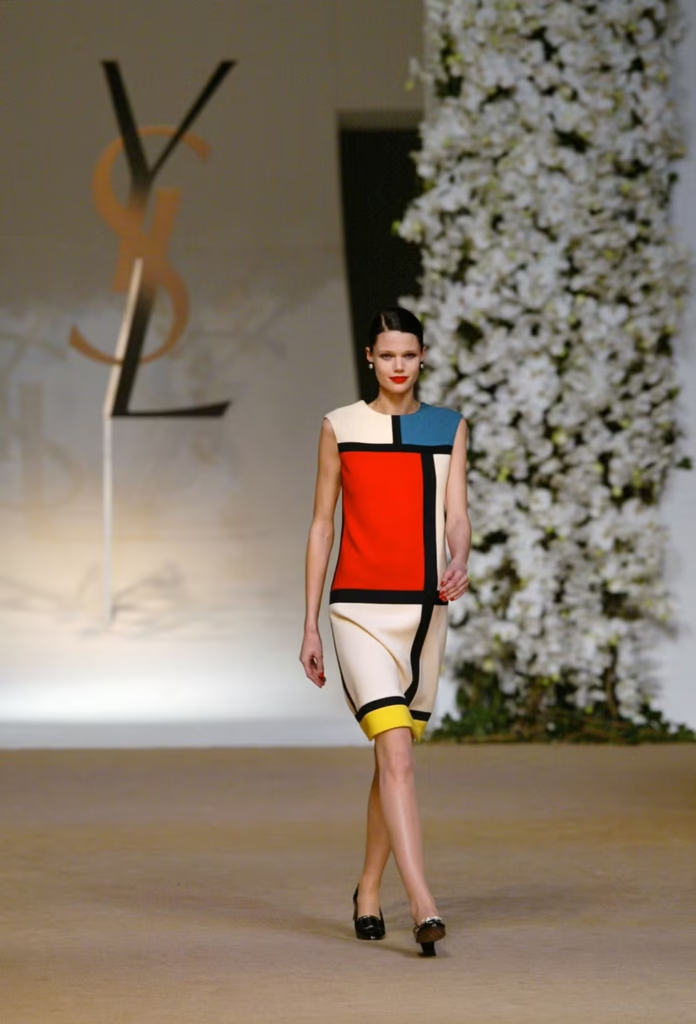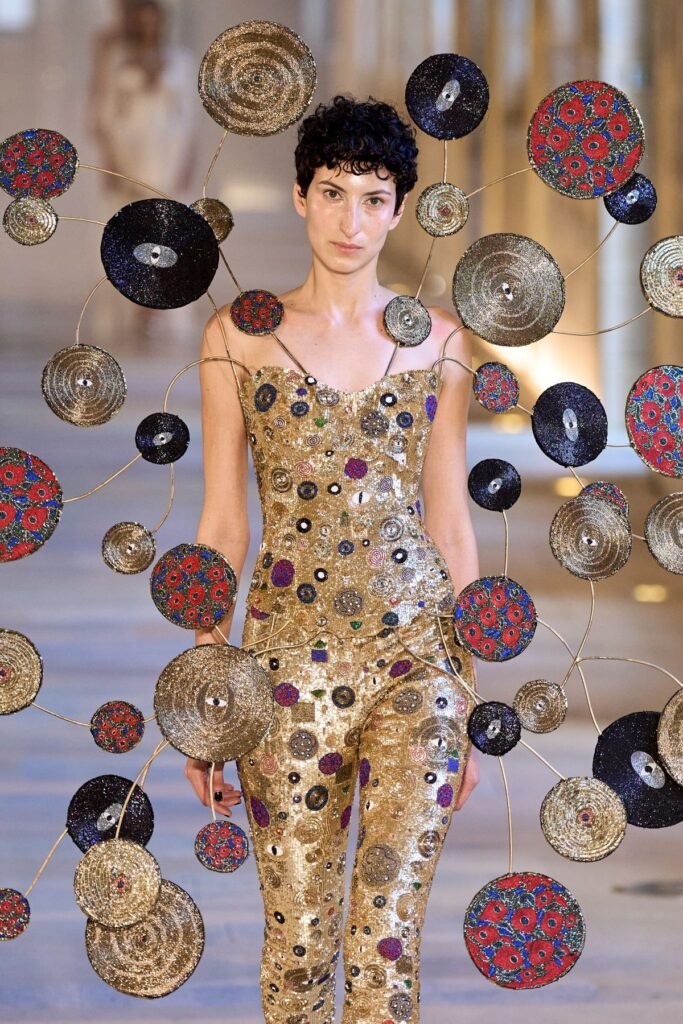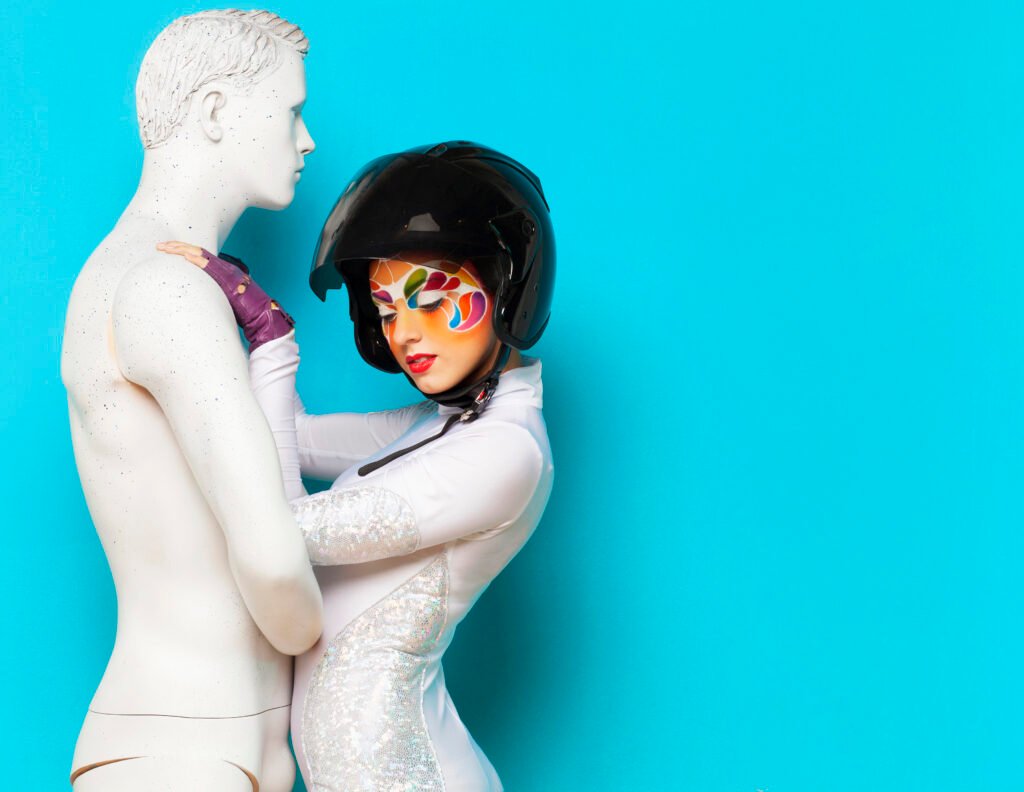Fashion evolves fascinatingly when it absorbs the essence of artworks. This fusion creates vibrant dialogues between painting, sculpture, colors, and forms, elevating fabrics into true cultural expressions. Designers harness this synergy masterfully, especially because this dialogue allows powerful visual narratives that attract attention and echo through history.
Moreover, fashion-art isn’t limited to literal reproductions: it transforms styles by reinterpreting movements and brushstrokes with boldness. In this text, we explore how iconic creators borrow traits from classical and modern painters, generating trends that transcend seasons.
Get ready to discover how art inspires fashion in surprising, coherent, and highly expressive ways.
Yves Saint Laurent meets Piet Mondrian
As shapes form on fabrics, Yves Saint Laurent made history by transforming Piet Mondrian’s geometric works into shift dresses that defy conventions. According to the book Yves Saint Laurent by Laurence Benaïm, published in 1998, “the Mondrian collection represents the global village of modern esthetics, where color and form unite” — undoubtedly a powerful phrase revealing how much this creation shook fashion.

Benaïm also details unique artisanal techniques for sewing colored blocks, emphasizing how fashion can mirror the precision of painting. That collection remains, even today, as an example of an intricate dialogue between fashion and art.
Moschino and Gustav Klimt: Pictorial Boldness
Moschino, under Jeremy Scott’s direction, dared to incorporate Gustav Klimt’s visual universe in vibrant, metallic prints reminiscent of Klimt’s golden and sensual brushstrokes. According to the book Klimt: The Golden Years by Tobias G. Natter, published in 2003, “Klimt’s esthetics overflow with luxury and sensuality — elements Moschino converts into irresistible pop fashion.”
This transition from canvas to runway proves that art can be reinvented with humor, shine, and irreverence; definitely, a combination that captures global attention and generates memorable trends.

Picasso in Fabrics: Modern Cubism
Even more striking, Moschino also incorporated Picasso’s cubist elements into structured dresses and sculptural accessories. As explained in the book Picasso and His Era by Pierre Daix, published in 1990, “cubist fragmentation translates into fashion that challenges traditional proportions and perspectives.” Hence, this trend allows both viewer — and wearer — to explore new visions of the human body while donning multifaceted forms. Clearly, using cubism as a reference imprints modernity and avant-garde on contemporary creations.
New Horizons: Fashion as Continuous Artwork
Moreover, it’s worth noting that this integration isn’t solely proposed by big brands; renowned museums like the Los Angeles County Museum of Art (LACMA) host events that treat fashion as living art, paving the way for partnerships and conceptual exhibitions. This union reinforces the perception that clothing isn’t just clothing — it becomes narrative, performance, and aesthetics in motion.
Therefore, by elevating dresses, jackets, and accessories to artistic levels, these trends make fashion transcend the utilitarian, turning into sensory experiences. Reflecting on these intersections, we realize that each look can tell stories, evoke emotions, and perpetuate artistic legacies with style.
When we wear art, we wear history, emotions, and innovation. This fashion-art transcends time and technique. Embrace this transformative fusion: let each piece be a moving painting — a personal manifesto that walks with you.



